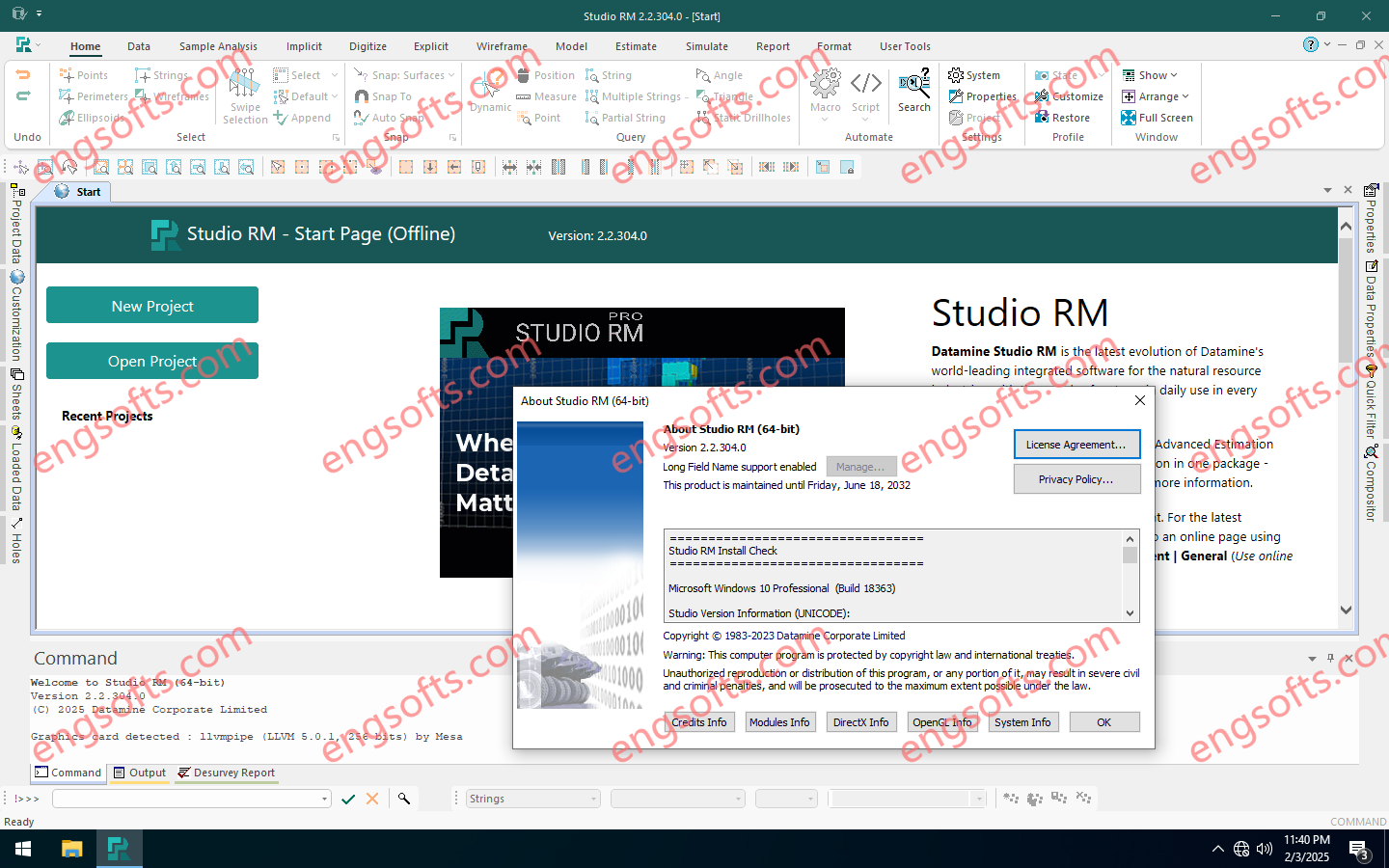Studio RM 2.2 introduces the new Project Data bar. This control bar, the first for many years, extends the functions of the Project Files bar to segregate data more appropriately for geologists. We plan to extend this further in later releases to include loaded data and overlay functions.
Datamine Studio RM 2024 v2.2.304 Tested Picture
let’s delve into some of the key highlights you can anticipate:
- A brand-new comprehensive tool for importing drillholes from any database (ODBC, Fusion, acQuire, Excel, Text etc.), with best practice validation and desurveying.
- A new implicit modelling tool for modelling faults, with age termination relationships. Fault surfaces are extruded from single or multiple traces, with varying dips / azimuths along the traces.
- Scissors faults (faults which terminate mid-way through a block) have been added to the Veins and Surfaces implicit modelling tool, for creating more geologically realistic faults.
- Upgrades to estimation, with an updated estimation library and speed improvements to Kriging with multiple domains.
- Implicit modelling commands (categorical and grade shells) now optionally snap to drillhole contacts.
- New point cloud reconstruction library for creating surfaces for points (e.g., from survey instruments).
The user interface, visualisation and data display options have also seen significant enhancements.
- An upgraded user interface, with a new look and feel and updated Ribbon layout based on usage analytics and customer feedback.
- A new project data bar for categorization and management of your geological data.
- Improvements to contouring, for creating custom bin intervals and smooth legends for better contour grid plots – great for grade contours.
- Improved visualization of structural data on drillholes, and calculation of structural readings from alpha/beta angles.


